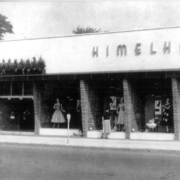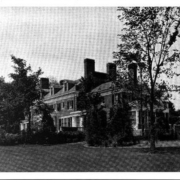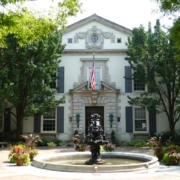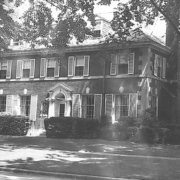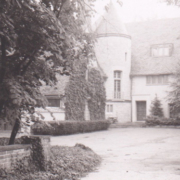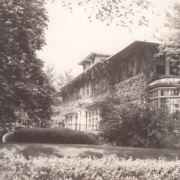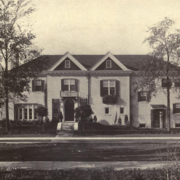Historical Architecture of Grosse Pointe – 99 Lake Shore
Last week I celebrated 10 years of the Historical Architecture of Grosse Pointe blog. With nearly 500 articles, posted every week since July 2014, it has been a pleasure to share the superb history of this special community.
This week we present the 82-year history of one of the oldest estates in Grosse Pointe, 99 Lake Shore. It appears the first residence on the land dates to 1875, when “Lake Terrace” a summer cottage, was completed for Congressman John Stoughton Newberry Sr., designed by Gordon W. Lloyd. Situated on an extensive property, the cottage was constructed of wood with a large open terrace that ran around most of the property. Image courtesy of the Detroit Public Library.
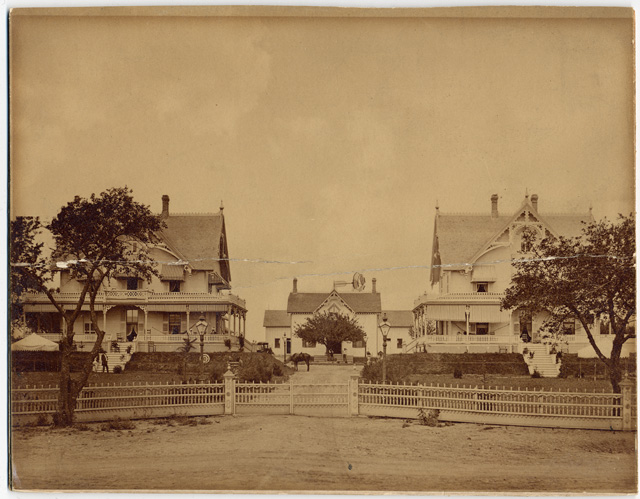
It is alleged the cottage was one of the first of its kind to be built in Grosse Pointe and proved to be influential in positioning the community as a picturesque summer location for wealthy families from Detroit. Around the mid 1880’s the Swiss chalet style cottage was significantly remodeled to create a much larger year-round three-story home. It was designed in a Shingle architectural style – an approach that was particularly popular in the United States and the Grosse Pointes between 1880 and 1900. Images courtesy of the Library of Congress, the Burton Historical Collection, Detroit Public Library.
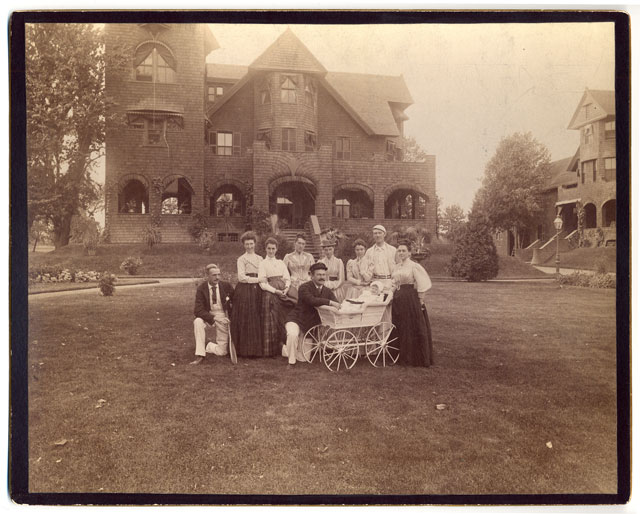

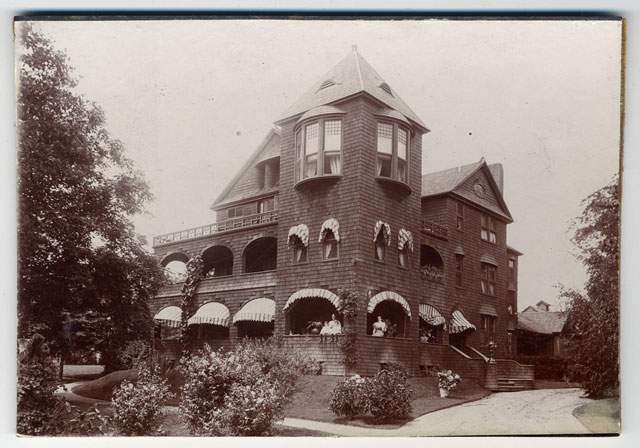

John S. Newberry Sr, along with his close friend, business partner, and neighbor James McMillan played a key role in developing the residential growth of Grosse Pointe, and the industrial growth in Detroit. The duo have been described (in an article by Thomas A. Arbaugh in Tonnancour, Volume II) as “taking Detroit’s industrial development from a cool, spring daybreak and transforming it into a blazing midsummer’s afternoon sun.” John S. Newberry Sr. was born in Waterville, New York in 1826. He moved with his parents to Michigan and graduated with a degree in civil engineering from Michigan University in 1847. He then proceeded to study law and was admitted to the bar in 1853. For several years he was a lawyer, specializing in the admiralty business. Then, in 1862, he established the Michigan Car Company of Detroit with James McMillan. Having been involved with this extremely successful company along with numerous large manufacturing enterprises John S. Newberry was elected to Congress in 1879, serving until 1881. His first wife was Harriet Newell Robinson (they married 30 October 1855). His second wife was Helen P. Handy, daughter of Truman P. Handy, a well-known financier and banker in Cleveland. Mr. Newberry had four children Harrie Robinson; Truman Handy (resided at 123 Lake Shore); John Stoughton. Jr. (resided at 99 Lake Shore); and Helen Hall (resided at 301 Lake Shore). John S. Newberry Sr. passed on January 2, 1887. Around 1910, the house was demolished.
Following his father’s death, it appears the estate was passed to Mr. Newberry’s third son John S. Newberry Jr. and his wife Edith. Around 1911, the couple commissioned Albert Kahn to design a new home on the grounds. It was completed around 1914, set on one of the highest points of land in Grosse Pointe. The 14,400 sq ft residence had 30 rooms including 11 bathrooms and eight fireplaces. The expansive grounds included the mansion, garages, servants’ quarters, and greenhouses. It was reported Kahn’s work on the Georgian inspired residence was a “tireless symbol of the dignity and refinement of formal living and was to prove pivotal in creating a new phase of traditional architecture in the Grosse Pointes’.” Source: Tonnancour, Volume 1. Image courtesy of: Grosse Pointe Historical Society. And the Western Architect (October 1916).
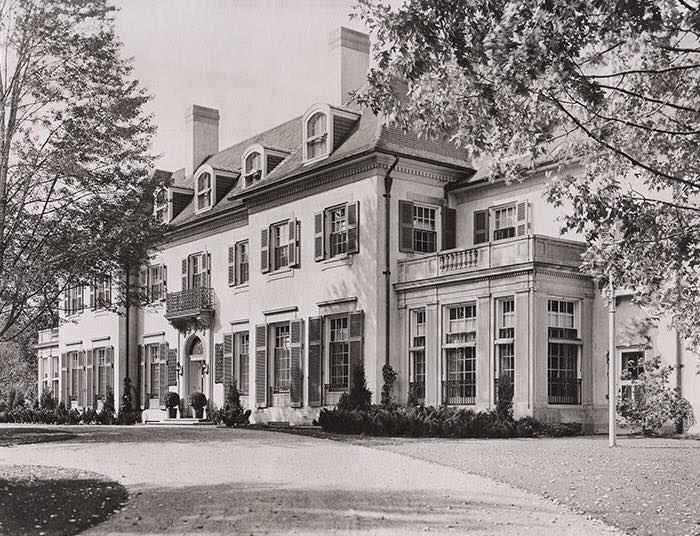

The house was recognized for its distinguished beauty, proportion, and refinement of detail. The exterior of the home was limestone, with flared eaves, a stone doorway, and an overhanging wrought iron balcony. It has been described as having “a gray frame with white Victorian lace work, circled with a wide plaza both upstairs and down. High broad stairs led to the front door. The entrance to the home was a long-paved driveway edged with evergreens. At dusk ornate gas lights brightened the drive for carriages, and later automobiles.” Source: Grosse Pointe News (July 1959). Images courtesy of Tonnancour, Volume 1.


Inside, the rooms were formal in their arrangement with the living room, dining-room, and terrace facing northward towards the lawn and formal gardens as opposed to facing south and having a view of the lake. It is reported the main floor had countless architectural features. The living room originally contained an Italian renaissance fireplace (which Mrs. Newberry later replaced with a Georgian fireplace from England), while the dining-room was paneled in walnut with teak floors. Source: Tonnancour, Volume 1.
The national acclaimed landscape architect Ellen Biddle Shipman of New York (known for her formal gardens and lush planting style) was the landscape designer for the estate. The formal garden she created provided a wonderful setting for outdoor weddings of friends and family. It is reported the greenhouse kept the house filled with stunning azaleas and cyclamens during the winter months. First three photos courtesy of: Smithsonian Institution. Further photos courtesy of: Library of Congress.
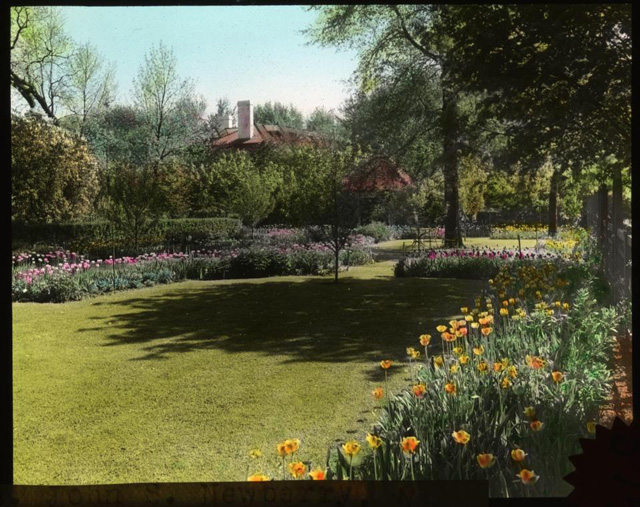
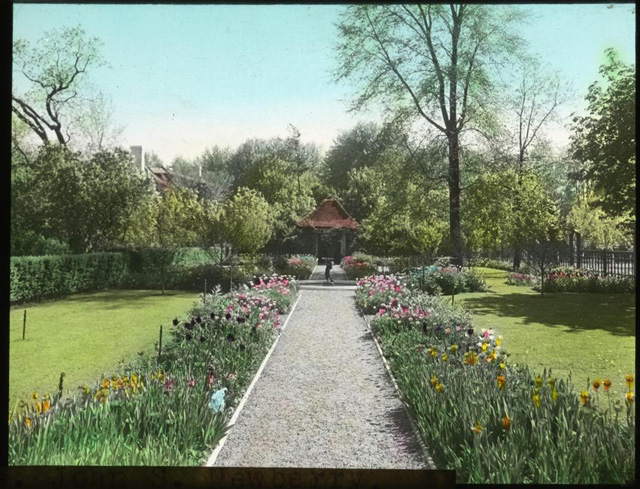


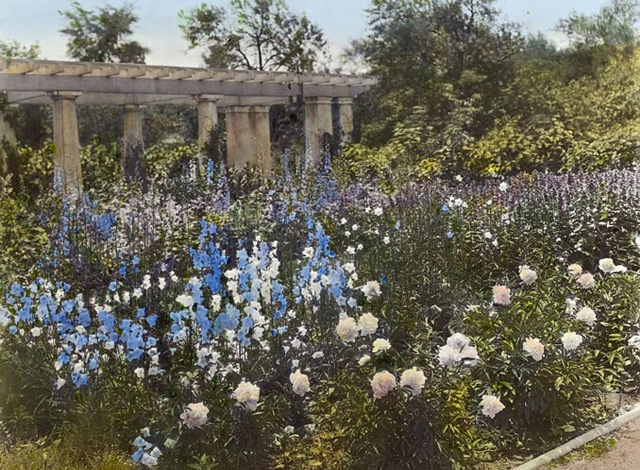
John S. Newberry Jr. was born on July 21, 1866. He attended Cornell University and during World War I was an instructor at Culver Military Academy. In 1908 he married Edith Stanton of Detroit. During his career he was a capitalist and civic leader. He was also among the early stockholders of Packard and the Detroit Steel Company. Many years later he became vice-president and secretary of the Newberry Estate. John S. Newberry Jr. passed August 23, 1937, at the couple’s summer home in Rhode Island. Source: Grosse Pointe News (August 1937).
Edith DeNavarre Stanton Newberry was known for her love of gardening. The gardens at 99 Lake Shore were visited many times by local residents during the annual Pointe Garden Pilgrimage. Mrs. Newberry was a member of the Garden Club of Michigan and won numerous prizes in flower shows with the produce from the magnificent gardens at 99 Lake Shore. Aside from gardening, Edith Newberry was president of the Detroit Symphony Orchestra and became responsible for interesting many prominent women in the symphony. In 1940, a testimonial dinner honored her service to the symphony with over 500 civic leaders attending the event. Source: Grosse Pointe News (September 1956).
Upon the death of Edith Newberry on September 24, 1956, 99 Lake Shore was deemed too costly to maintain and it was demolished in the summer of 1957. Prior to its demolition a permit was issued by the City of Grosse Pointe Farms to move a house from the estate to 66 Mapleton Road – the cost of the relocation was estimated at $17,000. Source: Grosse Pointe News (April 1957). Then, on May 12 an auction was held at the property – solid copper gutters, paneling and fireplaces were listed in the auction catalogue.
It was reported in the Detroit Free Press (June 1957) it cost $17,500 (around $195,000 today) to raze the property with the wrecking crew promising “the sprawling estate would be reduced to a hole in the ground in 90 days”. After 82 years of history the last Newberry owned mansion on Lake Shore was gone.
Next week we will present the story of what became of the former estate.
*Photos courtesy of the Higbie Maxon Agney archives unless stated.
** Research, information, and data sources are deemed reliable, but accuracy cannot be fully guaranteed.
Written by Katie Doelle
Copyright © 2024 Katie Doelle


